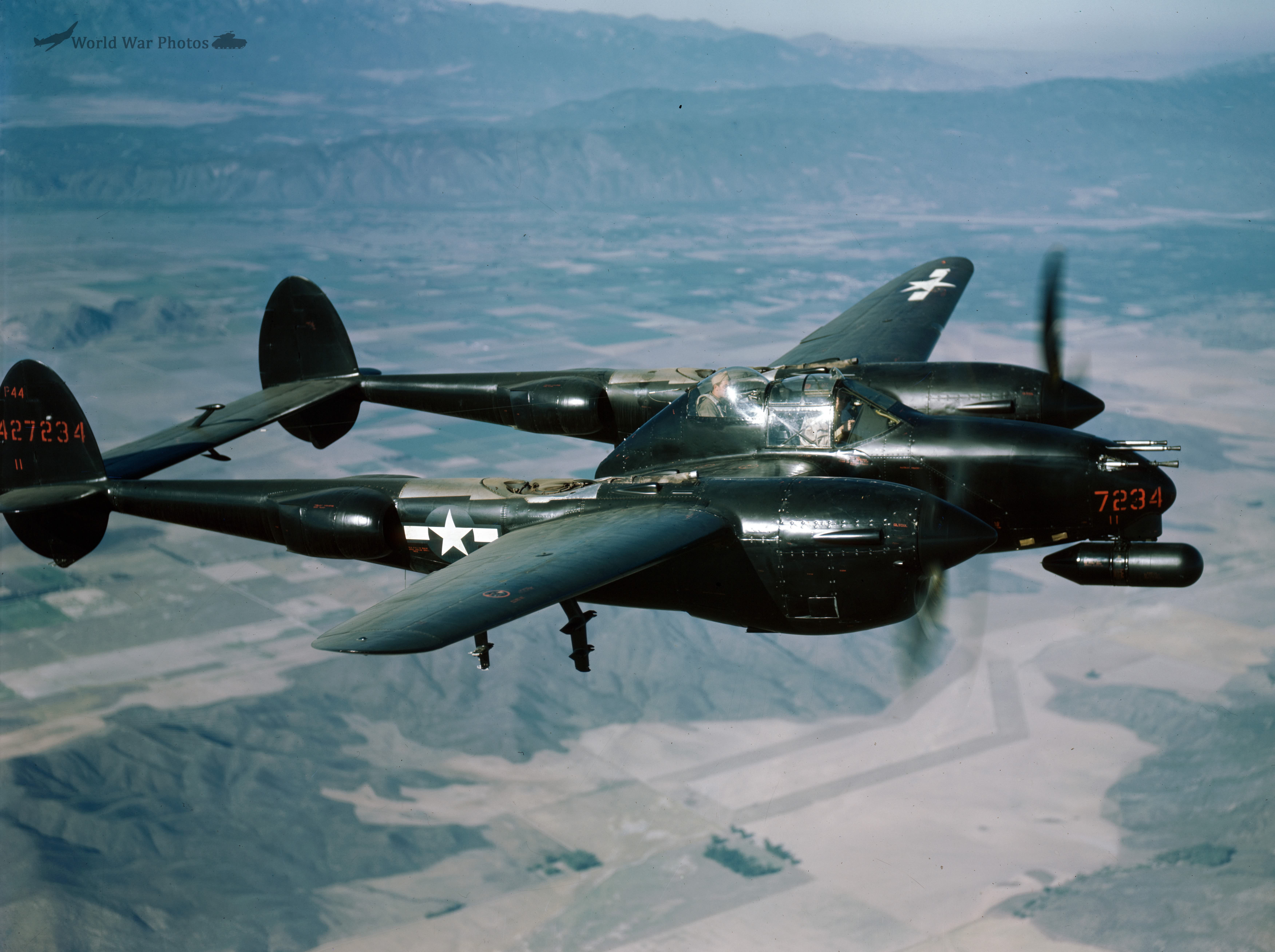Based on the challenges encountered during early single-seat P-38 night fighter missions, Lockheed developed a specialized P-38 variant tailored for nocturnal combat. To expedite the process, the existing P-38L was modified to accommodate a second crew member, a radar operator. This was a crucial adaptation as effectively piloting and tracking enemy aircraft in darkness was exceedingly demanding for a lone aviator. The presence of a dedicated radar operator significantly enhanced the pilot’s ability to focus on flight while the operator managed the radar system and guided the aircraft into optimal attack positions. Leveraging existing two-seat P-38 prototypes, Lockheed had access to essential weight and balance data, minimizing structural modifications required for the Night Lightning.
To provide the radar operator with adequate space and visibility, a transparent Perspex dome was integrated into the rear cockpit canopy. Although the operator’s primary role was radar-based, the improved visibility enhanced situational awareness. The radar operator’s station was equipped with a comprehensive instrument panel and a prominent radar display. After initial experiments with wing-mounted radar, the P-38M’s radar scanner was relocated to a streamlined pod beneath the nose. This arrangement utilized a modified bomb pylon and resembled the air-sea search (ASH) pods employed by the US Navy. The compact radar pod had minimal impact on the P-38’s performance and did not obstruct the nose-mounted machine guns, although the cannon was removed to reduce weight. To mitigate disruptions to the pilot’s night vision, flash suppressors were installed on the machine guns. Attempts to dampen the glowing turbocharger exhaust were unsuccessful, and no modifications were made in this area.
Despite certain compromises, the P-38M Night Lightning offered distinct advantages over single-seat night fighters. In late October 1944, the USAAF contracted Lockheed to convert eighty P-38L-5 aircraft into this configuration. The Night Lightning exhibited superior speed compared to the larger Northrop P-61 Black Widow, reaching a top speed of 406 mph at 15,000 feet, surpassing the Black Widow’s 369 mph at 20,000 feet. Additionally, the P-38M boasted a faster initial climb rate of 3,075 feet per minute and could reach 20,000 feet in 8.7 minutes.
Following modifications, the first P-38M underwent testing at Hammer Field, California. After completing flight evaluations, it was unfortunately lost in an accident. The initial production P-38M-6-LO took flight on January 5, 1945. By this time, the demand for dedicated night fighters was diminishing due to the satisfactory performance of the P-61 Black Widow. The emergence of jet propulsion further reduced the urgency for piston-engine night fighters. Nevertheless, Lockheed continued converting late-production P-38Ls to fulfill the contract, although the exact number of completed conversions remains uncertain. All P-38M modifications were carried out at the Dallas Modification Center.
